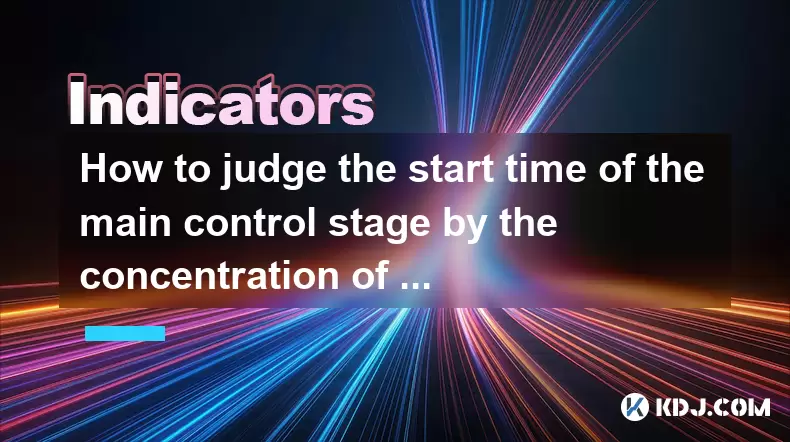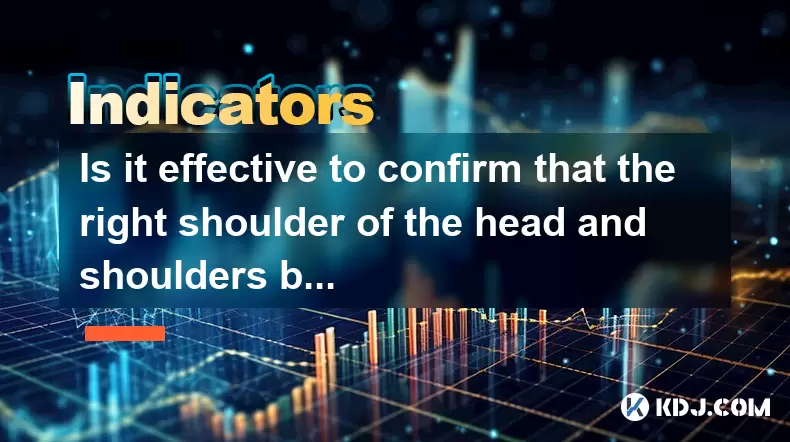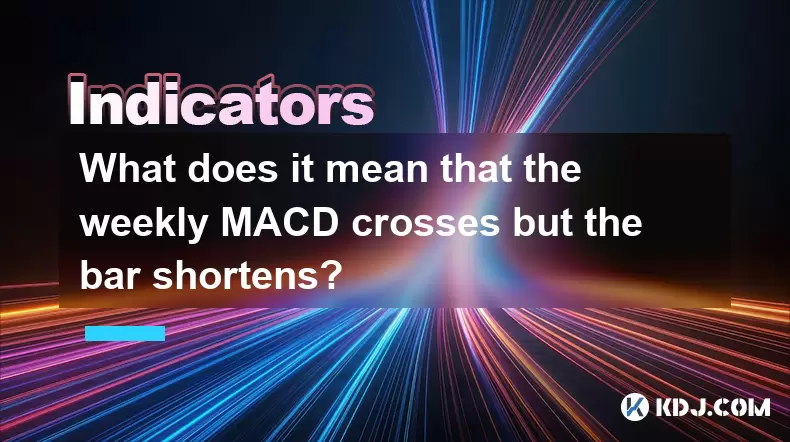-
 Bitcoin
Bitcoin $106,754.6083
1.33% -
 Ethereum
Ethereum $2,625.8249
3.80% -
 Tether USDt
Tether USDt $1.0001
-0.03% -
 XRP
XRP $2.1891
1.67% -
 BNB
BNB $654.5220
0.66% -
 Solana
Solana $156.9428
7.28% -
 USDC
USDC $0.9998
0.00% -
 Dogecoin
Dogecoin $0.1780
1.14% -
 TRON
TRON $0.2706
-0.16% -
 Cardano
Cardano $0.6470
2.77% -
 Hyperliquid
Hyperliquid $44.6467
10.24% -
 Sui
Sui $3.1128
3.86% -
 Bitcoin Cash
Bitcoin Cash $455.7646
3.00% -
 Chainlink
Chainlink $13.6858
4.08% -
 UNUS SED LEO
UNUS SED LEO $9.2682
0.21% -
 Avalanche
Avalanche $19.7433
3.79% -
 Stellar
Stellar $0.2616
1.64% -
 Toncoin
Toncoin $3.0222
2.19% -
 Shiba Inu
Shiba Inu $0.0...01220
1.49% -
 Hedera
Hedera $0.1580
2.75% -
 Litecoin
Litecoin $87.4964
2.29% -
 Polkadot
Polkadot $3.8958
3.05% -
 Ethena USDe
Ethena USDe $1.0000
-0.04% -
 Monero
Monero $317.2263
0.26% -
 Bitget Token
Bitget Token $4.5985
1.68% -
 Dai
Dai $0.9999
0.00% -
 Pepe
Pepe $0.0...01140
2.44% -
 Uniswap
Uniswap $7.6065
5.29% -
 Pi
Pi $0.6042
-2.00% -
 Aave
Aave $289.6343
6.02%
How to judge the start time of the main control stage by the concentration of chips?
Chip concentration in crypto markets, tracked via Gini coefficient and top address holdings, signals when whales control market dynamics, aiding prediction of main control stage start.
Jun 08, 2025 at 04:28 am

Understanding Chip Concentration and Market Control
In the world of cryptocurrency, understanding the concentration of chips is crucial for investors and traders who aim to identify the start of the main control stage in a market cycle. Chip concentration refers to the distribution of a cryptocurrency's total supply among its holders. A high concentration of chips in the hands of a few large holders can indicate that these entities have significant control over the market. By analyzing this concentration, one can better predict the timing of key market movements.
The Role of Large Holders in Market Dynamics
Large holders, often referred to as whales, play a pivotal role in the cryptocurrency market. Their buying and selling activities can significantly impact the price and volume of a cryptocurrency. When a small number of addresses hold a large portion of the total supply, it is a sign that these holders could potentially manipulate the market to their advantage. The start of the main control stage is typically marked by a period where these whales accumulate or distribute their holdings, leading to a shift in market dynamics.
Metrics for Measuring Chip Concentration
To judge the start time of the main control stage, investors need to monitor several key metrics related to chip concentration. The Gini coefficient is one such metric that measures the inequality among values of a frequency distribution. A higher Gini coefficient indicates a higher concentration of chips among fewer holders. Additionally, the percentage of total supply held by the top addresses is another important metric. By tracking these metrics over time, one can identify trends that signal the onset of the main control stage.
Analyzing On-Chain Data
On-chain data analysis is essential for understanding chip concentration. Platforms like Blockchain explorers and crypto analytics services provide detailed insights into the distribution of a cryptocurrency's supply. By examining the number of transactions, the volume of coins moved, and the addresses involved, one can gain a clearer picture of how chips are concentrated. Tools like Glassnode and Nansen offer advanced analytics that can help in tracking these metrics and identifying patterns that indicate the start of the main control stage.
Identifying Patterns and Trends
To accurately judge the start time of the main control stage, it is important to identify specific patterns and trends in chip concentration. A sudden increase in the percentage of supply held by top addresses can signal that whales are accumulating, which often precedes a significant market move. Conversely, a gradual decrease in concentration might indicate that these large holders are distributing their holdings, potentially leading to a market correction. By monitoring these patterns over time, investors can better anticipate when the main control stage is about to begin.
Practical Steps to Monitor Chip Concentration
Here are some practical steps that investors can take to monitor chip concentration and judge the start time of the main control stage:
Use Blockchain Explorers:
- Navigate to a reliable blockchain explorer for the cryptocurrency you are interested in.
- Look for the section that shows the distribution of the total supply among different addresses.
- Pay attention to the percentage of supply held by the top addresses and track any changes over time.
Utilize Crypto Analytics Platforms:
- Sign up for a crypto analytics service like Glassnode or Nansen.
- Access their dashboards that provide detailed metrics on chip concentration.
- Set up alerts for significant changes in the Gini coefficient or the percentage of supply held by top addresses.
Track On-Chain Metrics:
- Monitor the number of large transactions and the addresses involved.
- Keep an eye on the volume of coins moved by top holders.
- Use historical data to compare current trends with past market cycles.
Analyze Market Sentiment:
- Follow social media and forums to gauge the sentiment among large holders.
- Look for announcements or news that might influence the behavior of whales.
- Combine sentiment analysis with on-chain data to get a more comprehensive view.
Integrating Chip Concentration with Other Indicators
While chip concentration is a valuable metric, it should not be used in isolation. Integrating it with other technical and fundamental indicators can provide a more robust analysis. For example, combining chip concentration data with price action, trading volume, and market sentiment can help confirm the start of the main control stage. By using a multi-faceted approach, investors can increase their confidence in their market predictions.
Case Studies of Chip Concentration in Action
Examining past case studies can provide valuable insights into how chip concentration has influenced the start of the main control stage in different cryptocurrencies. For instance, Bitcoin's bull run in 2020-2021 saw a significant increase in chip concentration among top addresses before the price surge. Similarly, Ethereum's market movements in 2017 were preceded by noticeable shifts in chip distribution. By studying these cases, investors can better understand the patterns and trends that signal the beginning of the main control stage.
Frequently Asked Questions
Q: Can chip concentration alone predict the start of the main control stage accurately?
A: While chip concentration is a critical factor, it should be used in conjunction with other indicators such as price action, trading volume, and market sentiment to increase the accuracy of predictions.
Q: How often should I check the chip concentration metrics?
A: It is advisable to monitor chip concentration metrics regularly, ideally on a daily or weekly basis, to stay updated on any significant changes that might indicate the start of the main control stage.
Q: Are there any tools that can automate the tracking of chip concentration?
A: Yes, several crypto analytics platforms like Glassnode and Nansen offer tools that can automate the tracking of chip concentration metrics and provide alerts for significant changes.
Q: Can retail investors influence chip concentration?
A: While retail investors can impact the market, their influence on chip concentration is typically minimal compared to large holders. However, collective actions by a large number of retail investors can sometimes lead to noticeable shifts in the distribution of chips.
Disclaimer:info@kdj.com
The information provided is not trading advice. kdj.com does not assume any responsibility for any investments made based on the information provided in this article. Cryptocurrencies are highly volatile and it is highly recommended that you invest with caution after thorough research!
If you believe that the content used on this website infringes your copyright, please contact us immediately (info@kdj.com) and we will delete it promptly.
- 2025-W Uncirculated American Gold Eagle and Dr. Vera Rubin Quarter Mark New Products
- 2025-06-13 06:25:13
- Ruvi AI (RVU) Leverages Blockchain and Artificial Intelligence to Disrupt Marketing, Entertainment, and Finance
- 2025-06-13 07:05:12
- H100 Group AB Raises 101 Million SEK (Approximately $10.6 Million) to Bolster Bitcoin Reserves
- 2025-06-13 06:25:13
- Galaxy Digital CEO Mike Novogratz Says Bitcoin Will Replace Gold and Go to $1,000,000
- 2025-06-13 06:45:13
- Trust Wallet Token (TWT) Price Drops 5.7% as RWA Integration Plans Ignite Excitement
- 2025-06-13 06:45:13
- Ethereum (ETH) Is in the Second Phase of a Three-Stage Market Cycle
- 2025-06-13 07:25:13
Related knowledge

How to interpret the low opening the next day after the long lower shadow hits the bottom?
Jun 18,2025 at 12:22am
Understanding the Long Lower Shadow Candlestick PatternIn technical analysis, a long lower shadow candlestick is often seen as a potential reversal signal in a downtrend. This pattern occurs when the price opens, trades significantly lower during the session, but then recovers to close near the opening price or slightly above. The long wick at the botto...

How to operate the RSI indicator repeatedly in the 40-60 range?
Jun 18,2025 at 12:56am
Understanding the RSI Indicator and Its RelevanceThe Relative Strength Index (RSI) is a momentum oscillator widely used in cryptocurrency trading to measure the speed and change of price movements. Typically, the RSI ranges from 0 to 100, with levels above 70 considered overbought and below 30 considered oversold. However, when the RSI repeatedly stays ...

How strong is the MACD golden cross below the zero axis?
Jun 17,2025 at 11:00pm
Understanding the MACD Indicator in Cryptocurrency TradingThe Moving Average Convergence Divergence (MACD) is one of the most widely used technical indicators among cryptocurrency traders. It helps identify potential trend reversals, momentum shifts, and entry or exit points. The MACD consists of three main components: the MACD line, the signal line, an...

How effective is the golden cross of the William indicator double line in the oversold area?
Jun 17,2025 at 11:56pm
Understanding the William Indicator and Its Double Line SetupThe William %R (Williams Percent Range) is a momentum oscillator used to identify overbought or oversold conditions in a market. It ranges from 0 to -100, with readings above -20 considered overbought and below -80 deemed oversold. The double line setup refers to plotting two different timefra...

Is it effective to confirm that the right shoulder of the head and shoulders bottom volume at the 30-minute level is enlarged?
Jun 17,2025 at 11:42pm
Understanding the Head and Shoulders Pattern in Cryptocurrency TradingThe head and shoulders pattern is one of the most recognized reversal patterns in technical analysis, especially within cryptocurrency trading. It typically signals a potential shift from a bullish trend to a bearish one. This pattern consists of three peaks: the left shoulder, the he...

What does it mean that the weekly MACD crosses but the bar shortens?
Jun 18,2025 at 01:07am
Understanding the MACD IndicatorThe Moving Average Convergence Divergence (MACD) is a popular technical analysis tool used in cryptocurrency trading to identify potential trend reversals and momentum shifts. It consists of three main components: the MACD line, the signal line, and the histogram (also known as the bar). The MACD line is calculated by sub...

How to interpret the low opening the next day after the long lower shadow hits the bottom?
Jun 18,2025 at 12:22am
Understanding the Long Lower Shadow Candlestick PatternIn technical analysis, a long lower shadow candlestick is often seen as a potential reversal signal in a downtrend. This pattern occurs when the price opens, trades significantly lower during the session, but then recovers to close near the opening price or slightly above. The long wick at the botto...

How to operate the RSI indicator repeatedly in the 40-60 range?
Jun 18,2025 at 12:56am
Understanding the RSI Indicator and Its RelevanceThe Relative Strength Index (RSI) is a momentum oscillator widely used in cryptocurrency trading to measure the speed and change of price movements. Typically, the RSI ranges from 0 to 100, with levels above 70 considered overbought and below 30 considered oversold. However, when the RSI repeatedly stays ...

How strong is the MACD golden cross below the zero axis?
Jun 17,2025 at 11:00pm
Understanding the MACD Indicator in Cryptocurrency TradingThe Moving Average Convergence Divergence (MACD) is one of the most widely used technical indicators among cryptocurrency traders. It helps identify potential trend reversals, momentum shifts, and entry or exit points. The MACD consists of three main components: the MACD line, the signal line, an...

How effective is the golden cross of the William indicator double line in the oversold area?
Jun 17,2025 at 11:56pm
Understanding the William Indicator and Its Double Line SetupThe William %R (Williams Percent Range) is a momentum oscillator used to identify overbought or oversold conditions in a market. It ranges from 0 to -100, with readings above -20 considered overbought and below -80 deemed oversold. The double line setup refers to plotting two different timefra...

Is it effective to confirm that the right shoulder of the head and shoulders bottom volume at the 30-minute level is enlarged?
Jun 17,2025 at 11:42pm
Understanding the Head and Shoulders Pattern in Cryptocurrency TradingThe head and shoulders pattern is one of the most recognized reversal patterns in technical analysis, especially within cryptocurrency trading. It typically signals a potential shift from a bullish trend to a bearish one. This pattern consists of three peaks: the left shoulder, the he...

What does it mean that the weekly MACD crosses but the bar shortens?
Jun 18,2025 at 01:07am
Understanding the MACD IndicatorThe Moving Average Convergence Divergence (MACD) is a popular technical analysis tool used in cryptocurrency trading to identify potential trend reversals and momentum shifts. It consists of three main components: the MACD line, the signal line, and the histogram (also known as the bar). The MACD line is calculated by sub...
See all articles

























































































